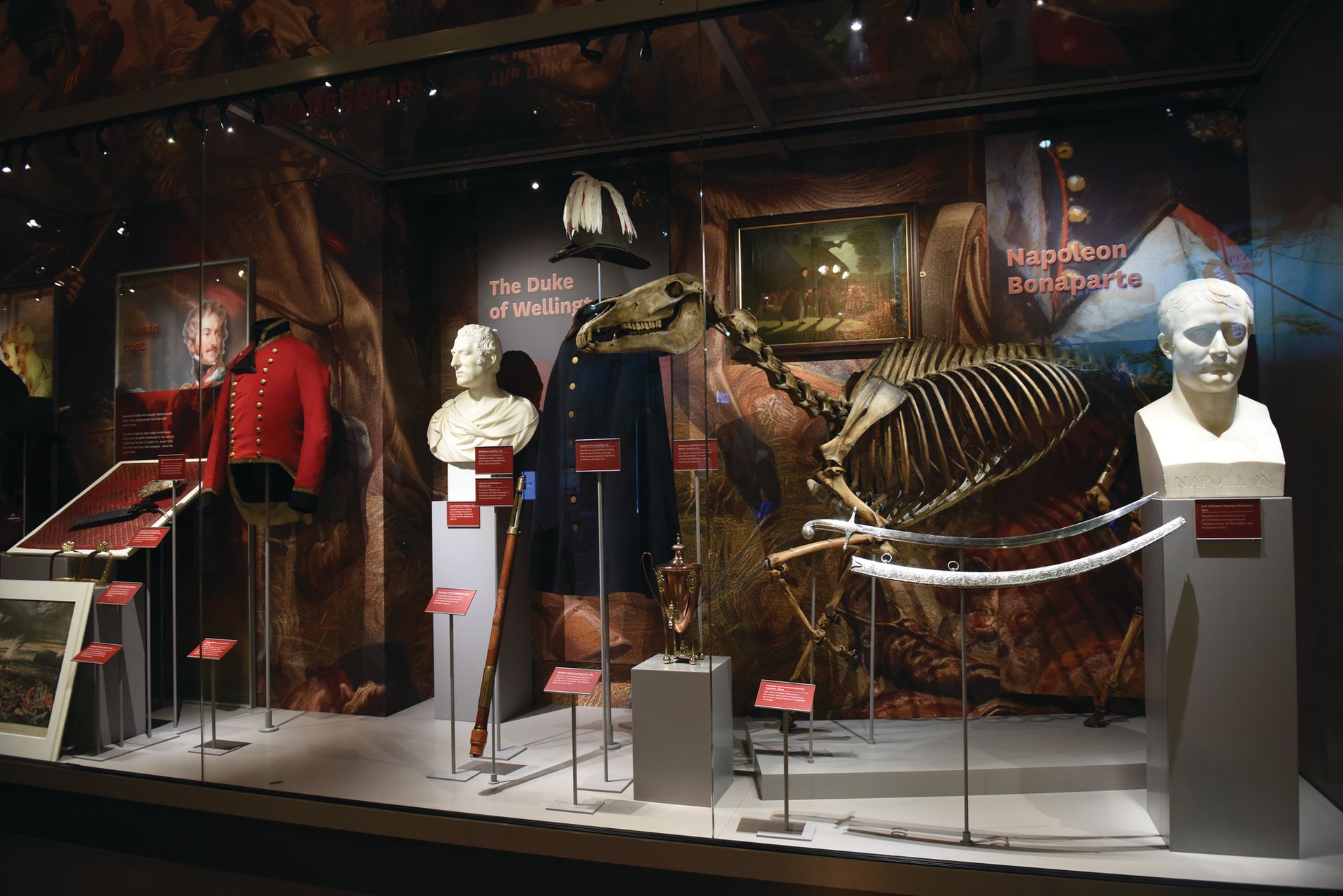The National Army Museum in London’s Chelsea reopens its doors today (30 March) after a three-year, £23.75m makeover. The museum created by royal charter in 1960 and originally located in former stables at the military academy Sandhurst houses the central collection of the British Army and of the Commonwealth land forces. Thanks in part to a £11.5m grant from the Heritage Lottery Fund, the museum has now transformed its brutalist 1960s building and taken hundreds of objects—uniforms, weapons, equipment and ephemera as well as art—out of the stores for the first time.
The refurbishment by the architects BDP and the design agency Event aims to increase visitor numbers from 270,000 to more than 400,000 a year. The permanent displays convert 350 years of British military history into five new thematic galleries installed around a light-filled atrium: Soldier, Army, Battle, Society and Insight. Exhibits range from Lawrence of Arabia’s robes and dagger and the recently conserved skeleton of Marengo, Napoleon’s horse captured after the Battle of Waterloo, to hard ration biscuits from the First World War and a Burberry trench coat. Two-thirds of the more than 2,500 objects have never been seen in public before.

The dedicated paintings gallery on the top floor has disappeared and the “cream of the collection” has now been interspersed throughout the other displays, says the senior research curator Emma Mawdsley. But the inaugural show in the museum’s new 500 sq. m exhibitions space, War Paint: Brushes with Conflict (until 19 November), presents more than 130 paintings, drawings, prints and objects exploring the art of conflict. Many of them were made by soldiers and former soldiers, such as REPETITION, 2004-5 (2005), a critique of the Iraq War by the Pop artist Gerald Laing, who served as an officer in the Royal Northumberland Fusiliers before he went to art school in the 1960s.
“I don’t think that you can understand British history if you don’t understand the history of the British army,” says Janice Murray, the museum’s director general. “The British army in many ways has shaped the country we live in today—and indeed the world we live in today—and I hope we’ve managed to capture that at the museum.”


